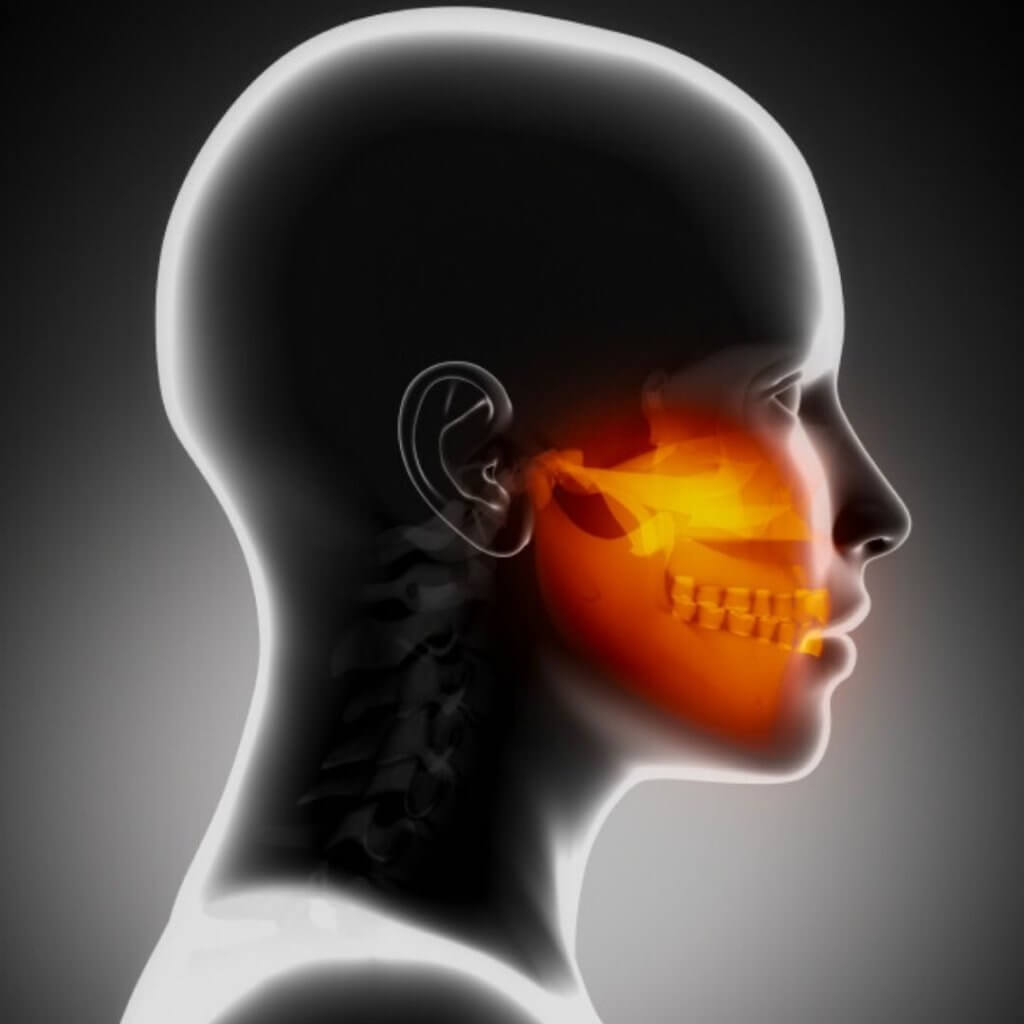
TMJ Dysfunction
Jaw Pain and Dysfunction
The jaw or temporomandibular joint (TMJ) is frequently unacknowledged as a source of pain in many head, neck, face, and vocal conditions. People who experience headaches, motor vehicle accidents, sport or work site injuries often have jaw issues that can3 accumulate to overwhelming levels.
Clenching the teeth is a very common habit during sleep, while concentrating, or from stress. This often results in an accumulation of both compressive forces in the joints and asymmetrical muscle tightness which can lead to clicking, pain and ultimately joint damage.
Resolving the joint compression and muscular tightness can re-pattern the jaw mechanics and save pain and difficulties decades later.
The jaw or temporomandibular joint (TMJ) is frequently unacknowledged as a source of pain in many head, neck, face, and vocal conditions. People who experience headaches, motor vehicle accidents, sport or work site injuries often have jaw issues that can3 accumulate to overwhelming levels.
Clenching the teeth is a very common habit during sleep, while concentrating, or from stress. This often results in an accumulation of both compressive forces in the joints and asymmetrical muscle tightness which can lead to clicking, pain and ultimately joint damage.
Resolving the joint compression and muscular tightness can re-pattern the jaw mechanics and save pain and difficulties decades later.
Why do some joints click?
The jaw is exceptional in that it operates as two separate joints bound together by one bone – the mandible. The muscles responsible for moving the joints work in tandem with how the teeth fit together (occlusion), along with the fit and movement of the cranial bones.
All is well when the jaw joints work within functional symmetry, but if one side begins to move differently, many compensatory patterns can begin. These adaptive movements can be the beginning of a vicious cycle where some tissues are overworked and eventually become compromised.
A friction-reducing disc exists inside the joint, much like the discs in the spine. The disc maintains the appropriate amount of space in the joint, and moves forward and back in coordination with the opening and closing of the mouth. Joint compression and muscle tightness often accumulate resulting in an abnormally forward disc position. Then, as the jaw bone moves, the disc bunches up like a speed bump on the road, producing a click. If left untreated, disc perforation can result, leaving the joint vulnerable to pain and arthritis.
Treatment involves working directly on the chewing muscles
Accessing the chewing muscles involves working inside the mouth for 20 to 30 seconds at a time, alternating between right and left sides. Releasing muscle tightness and joint compression fosters mechanical symmetry, addresses pain, and can contribute to improving your bite.
What to expect?
A series of 3 to 5 treatments, followed by a break of 7 to 10 days, then another series of 3 to 5 treatments is often required in an attempt to re-pattern the TMJ dysfunction.
Longstanding TMJ dysfunction can frequently be improved but not fully resolved. In these cases clients “graduate” after an initial series to monthly or seasonal visits of 2 treatments within a week to keep old patterns from recurring.
Seeking the Cause
Assessment begins with looking at the symmetry of mouth opening and closing, and habits of clenching and/or grinding. Pain is often reduced when the tightness in the chewing muscles is diminished or resolved.
TMJ pain and dysfunction frequently involves a vicious cycle comprised of many primary and secondary components. The goal is to identify and separate the components so that they are no longer influencing each others.
TMJ pain and dysfunction may be secondary to other conditions. Those who are troubled with headaches often have clenching and TMJ dysfunction as a silent contributor. Many cases of scoliosis or low back pain also present TMJ difficulties. Motor vehicle accidents and sport injuries often lay the foundation for TMJ issues. Massage Therapy’s holistic approach and generously timed sessions will address these related issues as well.

Leave a Reply